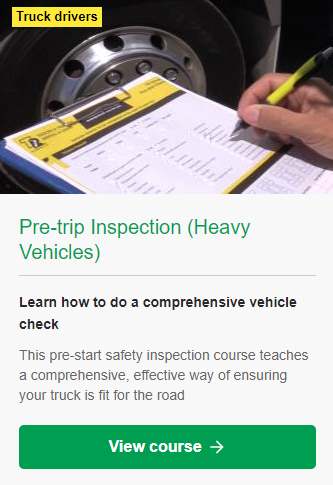The cab is your work area, so it needs to be safe and comfortable. A comfortable cab helps the driver avoid fatigue. Knowing how to do a pre-trip inspection means you’ll find issues with the truck before they become major problems.
Getting in the truck
To assist the driver getting in safely, especially where the floor level of the cab is a metre or more off the ground, handles are fixed on either side. This is so that you can maintain three points of contact as you get in and out.
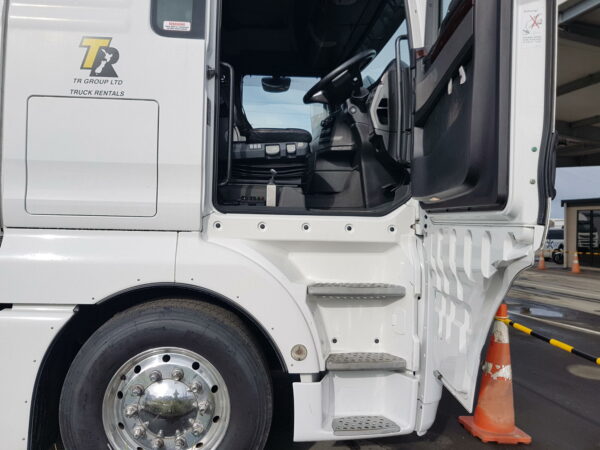
Check the handles are secure. If a handle is missing, get it replaced.
Steering wheel
Is there too much free play in the steering wheel and does the steering wheel feel loose? If so, have it fixed. Adjust it so that you have good control.
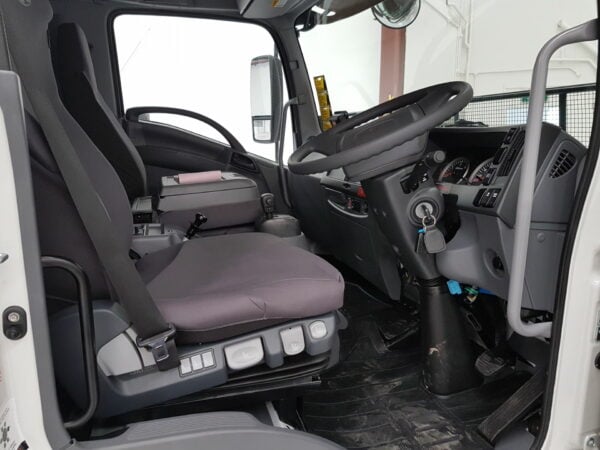
Seat
The padding materials in seats compresses over time, leading to less comfort for the driver. The seat material wears, leading to splits which cause further loss of padding material. The controls for the seat which change its position can wear our, and the air pressure which absorbs shocks can fail.
The driver should move the seat to the correct position before starting off. This includes forwards and backwards, seat height, the angle of the back of the seat and any additional controls such as the lumbar support, seat tilt and seat cushioning. This ensures that the controls are checked. Minor splits and wear on the seat squab do not have to be attended to immediately, but once they expose the foam and it starts to wear away, they should be fixed.
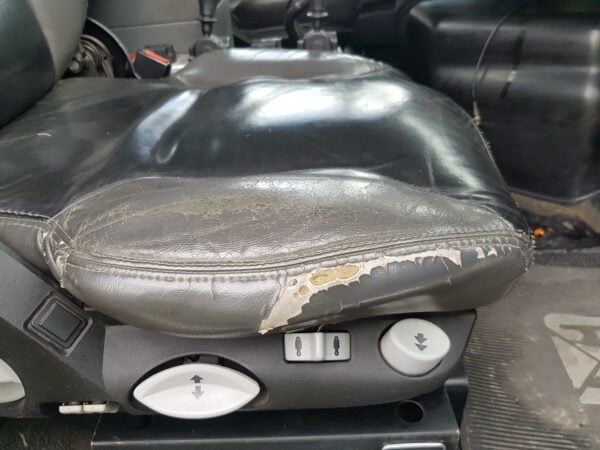
Air suspension seats should be in good condition as they are the main way of reducing vibration transmitted through the truck.
Check the controls for adjusting your seat.
Drivers can reduce the wear and tear on their seats by:
- Not sliding their whole weight off the side when getting in and out (see the photo above for the wear this causes)
- Not carrying items like keys in their back pocket (this is bad for them, too)
- Using a leather conditioner to keep the leather supple
- Keeping the seat clean (dirt in fabric seats causes extra wear as the particles wear on the seat fibres)
Seat belt
The belt’s webbing material should not be frayed or cut, the latch plate should clip securely into the buckle and the retractor should pull the seat belt back smoothly. Check the seat belt locks.
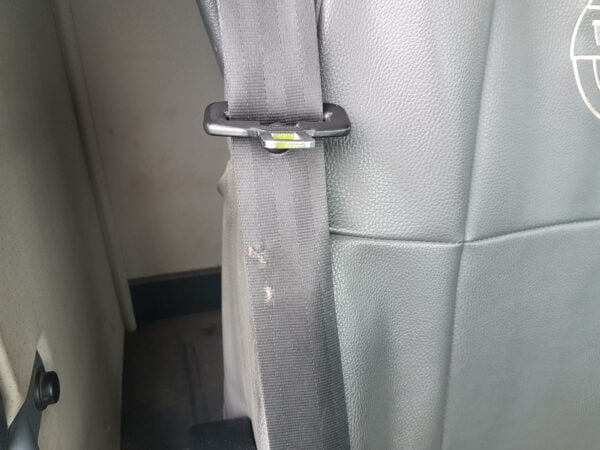
Any damage on the seat belts should be fixed immediately as it’s the single most effective measure a driver can take to reduce the likelihood of injury in a crash. Exposure to sunlight
Drivers can reduce the wear and tear on a seat belt by:
- ensuring it is kept clean (for the same reasons as the seat)
- taking care when pulling the seat belt that it’s not rubbing on anything
- avoiding crushing the seat belt
Ancillary items
If you drive a truck loader crane, the remote control may be in your cab. Check it’s secured to the charging cradle. Any spare batteries should be in a place where they won’t be damaged.
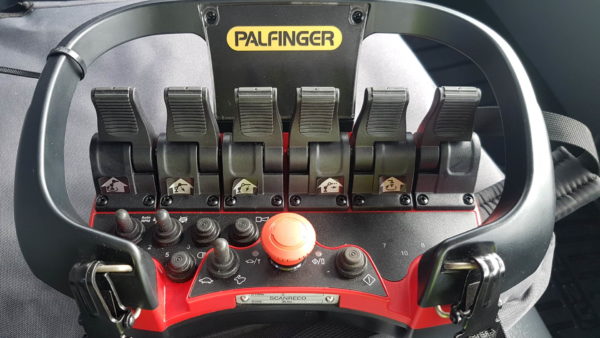
Fire extinguisher
If you carry one, check the expiry date and the pressure gauge to check it’s still OK. Ensure it’s either strapped down or it’s securely in a frame that is attached to part of your vehicle and it can’t fall out and roll around the floor.
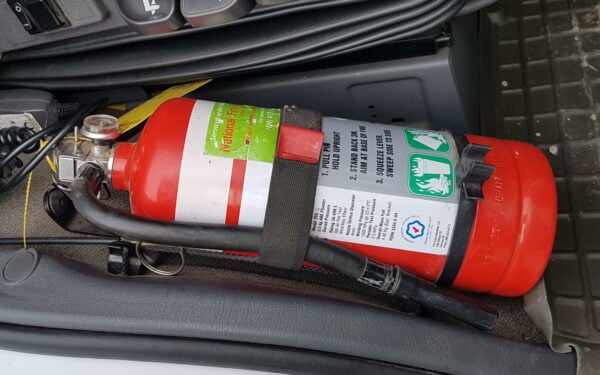
PPE
If you are required to carry PPE, check it’s there along with any other safety equipment.
Logbook
You’ll need your logbook in your truck while you are driving in case you are pulled over by CVST or police. Make sure it’s up-to-date before you start driving.
Dangerous goods documentation
The documentation should be in the dangerous goods wallet attached to the door.
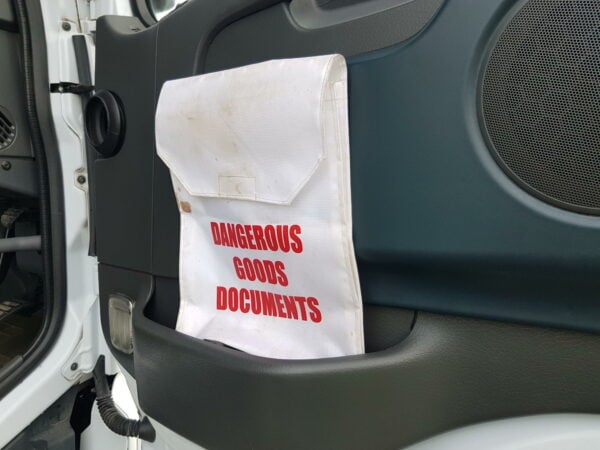
Dashboard and lights
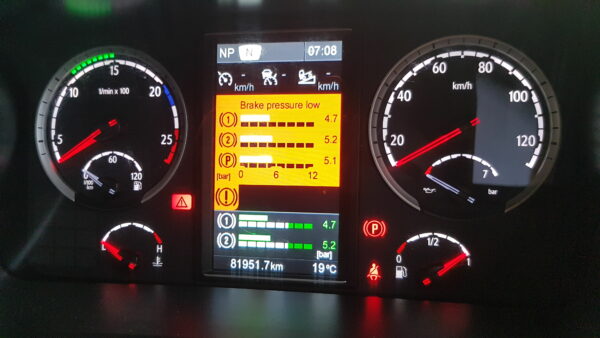
When you turn on the ignition the warning lights illuminate and as the truck’s computer checks them, they’ll go out. The only one remaining will be your park brake before you move off. Check all the gauges are functioning when you turn the engine on.
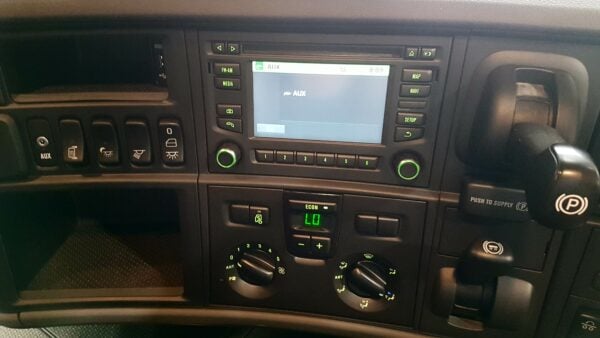
Set up your air conditioning, radio and RT, pair your phone to Bluetooth and set your map destination if you need to. The fewer things you have to do while moving, the better.
Loose items
Secure all loose items so that they can’t move around under braking, accelerating and cornering. This includes things you might want to leave on the bed of a sleeper cab or in racks.
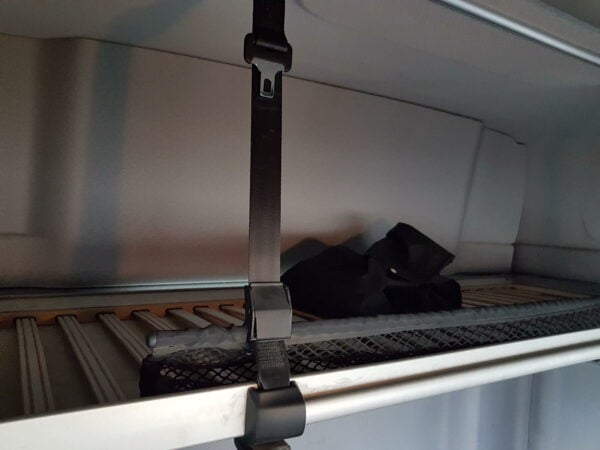
Rattles and squeaks
A can of WD40 in your toolkit is useful for all kinds of things, including getting rid of squeaks where they commonly occur (clutch pedal and seat). Some screwdrivers and an adjustable wrench can be used to tighten up loose panels that are rattling.
As well as checking the interior, you’ll need to do a comprehensive exterior check.

